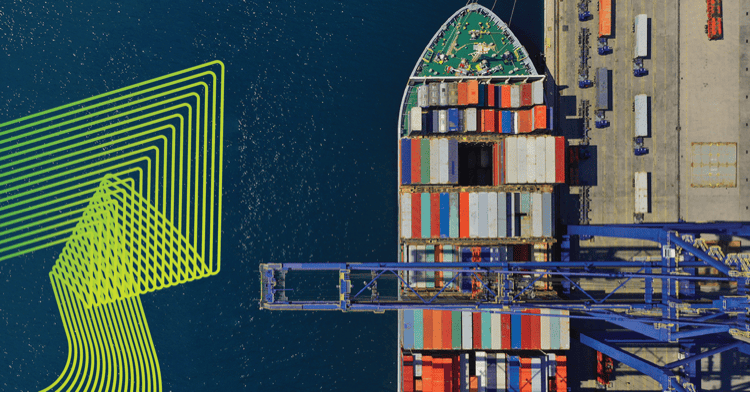Along with the growing complexity of the threat landscape, security teams are finding it more challenging than ever to manage evolving physical and cyber threats, hybrid warfare, and increasingly interconnected global systems. Many organizations struggle to adequately assess and mitigate threats, risks, and vulnerabilities in a timely manner. Without properly accomplishing these critical tasks, the organization is left exposed to security breaches and employees, assets, and operations are put at risk.
To best assess and address potential and emerging risks, organizations and their security leaders need to establish clear risk management plans. Seerist, a leader in risk and threat intelligence, is a tool that simplifies and enhances this process with augmented analytics and actionable insights – helping leaders make informed decisions and keep people and operations safe from disruption.
Defining Risk, Threat, and Vulnerability
To create a strong risk management plan, teams will want to start by ensuring all decision makers have a shared understanding of key elements including risk, threat, and vulnerability.
Let’s break down risk. Risk is the potential for loss, damage, or harm to assets, operations, or reputation. There are a few components that should be considered when discussing physical and cyber risk, including the likelihood of the risk and the impact. Understanding the probability of an event and the severity of its consequences is essential in order to develop the right strategy to address it. Risks that an organization may face include financial loss, which may occur due to fraud, reputational damage as a result of data breaches, and operational disruption caused by a supply chain attack.
A threat is any potential cause of harm or danger that could exploit vulnerabilities within an organization.
Security teams need to always be assessing what possible threats might impact their business. For example, cyber criminals, such as threat actors using ransomware, is a threat that should be considered at all times. Natural disasters are another threat that organizations should be savvy about. Hurricanes, tornadoes, forest fires, and the like, all have potential to cause massive damage. Another threat to consider is insider threats, such as employees sharing sensitive data. Oftentimes, humans are the root cause of intentional threats via error, bias, or intentional unethical behaviors such as sharing sensitive data.
Each of these scenarios is likely to negatively impact an organization and its people or operations. Security teams must be working to identify and proactively avoid risks at all cost.
Vulnerability is a weakness in any part of the organization, from its systems, processes, or people, that can be exploited by a threat. The list of vulnerabilities organizations need to be working to avoid include unpatched software vulnerabilities, weak passwords, poor security practices, or lack of employee training.
It is important for security teams to be aware of the vulnerabilities most likely to pose problems. When this is clear, it is more likely for them to mitigate against risks and ensure resources are used effectively to avoid dangerous pitfalls and keep the business headed toward success.
Risk, threat, and vulnerability are all related and connected. Without a threat, a vulnerability may not lead to a risk. It’s essential for security teams to be focused on all elements and address each one in its risk management approach.
The Risk Assessment Process: A Step-by-Step Guide
The best way to manage threats, risks, and vulnerabilities is to have a step-by-step plan to avoid them.
Step One: Identify Assets. Teams need to consider what assets need to be protected. For example, assets that often need the most protection include data systems, intellectual property, infrastructure, reputation, and personnel. To best protect assets, it is important to categorize them by importance, such as critical systems versus non-critical assets.
Step Two: Identify Threats. Leaders need to assess who or what could harm the organization’s assets. There are different threat types to consider, including cyber threats such as malware and ransomware, physical threats like theft and vandalism, natural threats or disasters, and human error. Threat intelligence is a critical component for mitigating these threats and can empower security teams to monitor for emerging threats via intelligence feeds and real-time data sources.
Step Three: Vulnerability Assessments. Organizations need to have a solid understanding of their weaknesses. Possible issues are lurking around every turn, from technical gaps that may include outdated software to process flaws in which leaders are lacking access control. Other vulnerabilities may include human errors like social engineering risks. While it is impossible to fully eradicate every vulnerability, it is impossible to minimize them and proactively prevent them. But this can only happen if leaders know what vulnerabilities they are dealing with. Proactive vulnerability management is key, including penetration testing and security audits.
Step Four: Analyze Risks. This step is all about assessing the likelihood and impact of each identified risk. It is important to leverage both qualitative and quantitative methods during this step. Tools to help with risk analysis include a risk matrix, probability vs impact charts, and the like. Security teams will want to consider risk tolerances and organizational priorities, as every organization will have different needs and tolerances.
Step Five: Prioritize Risks. Security teams need to focus on the most critical risks, conjuring both the likelihood and the impact. Risk prioritization is key during this time, as it will impact resource allocation and mitigation strategies. Teams will need to focus on the risks that are both the most likely, as well as the ones that would cause the most damage. In some cases these risks are one and the same, and in other scenarios, they are different. But both can be proactively strategized for.
Step Six: Develop Mitigation Strategies. After completing steps one through five, it’s time to really get to work. Teams must determine how they can best reduce or eliminate the security risks they have identified. They’ll want to consider technical solutions, including firewalls and encryption, as well as process improvements such as incident response plans, that can help the organization prevent and respond to risks in a timely manner. Employee training is another risk mitigation strategy that should be used. The entire organization needs to know what the most determinate risks are and work together in avoiding them. Teams should also investigate risk transfer (insurance) and contingency planning. After all, even if all of the preemptive work is conducted, some risks are completely unavoidable and therefore backup plans are needed.
Step Seven: Monitor and Review. This final step is often one teams want to speed through, but it deserves due diligence and time. Security leaders need to review the risk assessment conducted, along with all of its findings, and establish routine assessments. Industries and global conditions are continually changing, therefore organizations must respond accordingly and continue regular risk assessments that reflect changes in the threat landscape. Teams will want to incorporate new monitoring tools as needed to support their efforts, and leverage new findings to update risk management plans and strategies as necessary.
Best Practice for Managing Risk, Threat, and Vulnerability
There are a few ways for organizations to establish best practices for managing threat, vulnerability, and risk. It starts with regularly updating and patching systems. Plans and processes established three years ago, or even six months ago, may no longer be relevant in current conditions. It is essential to always be conscious of shifts and emerging issues that will pose new challenges for your organization or industry.
Ensuring the entire organization adopts a risk management mindset is also imperative. All decision-makers and leaders, as well as the greater employee base, need to understand what the risks, threats, and vulnerabilities are and be trained to monitor them. Offering various training, such as cyber security awareness, is very useful.
Lastly, it is key to establish incident response protocols. Security teams need to ensure decision-makers across the departments are unified in incident response protocols. This is another area in which corporate training can be very impactful.
The Role of Technology in Risk Management
The evolution of risk management technology is impressive. The field has shifted from manual processes to AI-driven platforms that deliver real-time insights. Security teams have never had so much information at their fingertips! This is a massive asset, but can be overwhelming and distracting at times. This is why it is so important for teams to identify the intelligence partners that will serve their organization and unique needs.
Seerist is an excellent partner as it offers tools to help teams receive predictive insights, identify and prioritize vulnerabilities using comprehensive data analysis and real-time monitoring, all while being extremely user-friendly. Whether a team wants reports, charts, interactive dashboards, or bite-sized alerts, Seerist is designed to help teams get the information they need, in the format that works best for them with speed. Emerging incidents don’t wait, Seerist is continuously improving its platform to offer indicators of stability in a given country, region, or city in order to help organizations stay ahead of issues that may negatively impact them.
A few of Seerist’s unique advantages include:
- Augmented analytics – Seerist combines AI (Artificial Intelligence) and ML (Machine Learning) with human expertise to provide deeper insights.
- Forecasting capabilities – Seerist offers the ability to forecast emerging threats and vulnerabilities before they become major risks.
- Comprehensive data sources – Seerist users have access to a wide variety of information sources, such as global news, threat intelligence feeds, and geopolitical insights, for a more holistic view.
- System integration – Seerist is designed to be intuitive and offers seamless integration with existing tools and platforms for streamlined workflows.
Risk Management Success
The geopolitical landscape has never been more complex. Security teams need support in order to successfully assess risks, threats, and vulnerabilities. There is simply too much information being created and shared for teams to effectively do this job without the aid of tools and technologies.
Seerist enables organizations to make data-driven decisions, enhance security posture, and mitigate risks effectively. Its augmented analytics platform empowers security teams to strengthen their risk assessment to better protect people, assets, and operations. Seerist is able to do this by providing consistent facts that are verified from on the ground experts, sharing insights on how to adapt to possible risks, and simplified intelligence via a platform that is intuitive and user-friendly. Additionally, Seerist prioritizes sharing details on the security and geopolitical-related events that are of the highest priority to a specific organization – this unique differentiator allows organizations to accelerate their ability to pick up indicators and warnings and get ahead of issues before they have devastating impact.
If your organization could benefit from a partner such as Seerist, reach out today to learn more or trail the platform and see how it can benefit you.






